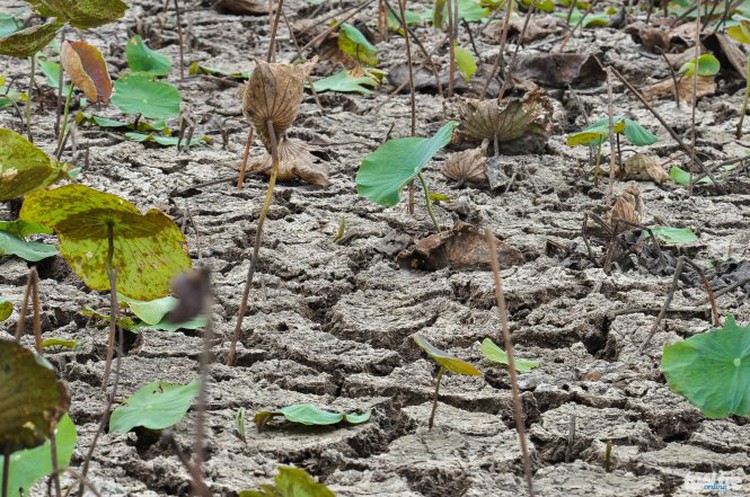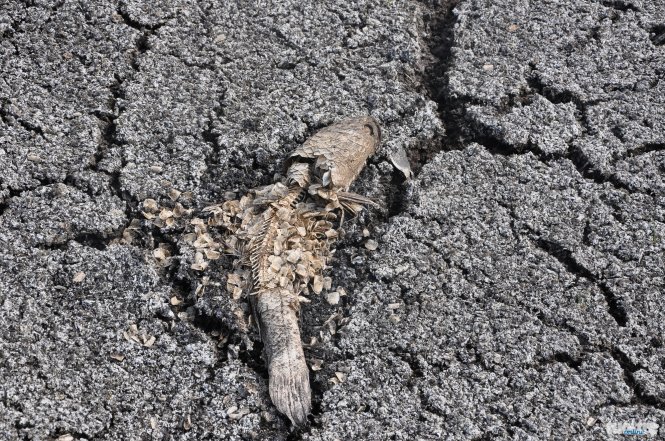
The core area of the Lang Sen Wetland Reserve in the Mekong Delta’s inland wetland Dong Thap Muoi (Plain of Reeds), a ramsar site in Vietnam, has fallen victim to the region’s severe drought.
Truong Thanh Son, director of the reserve in Long An Province, on Tuesday said his staff have been digging irrigation trenches to pump water from surrounding channels in order to save the area.
“The area is the most depressed part in Dong Thap Muoi,” Son said of the 200ha core zone. “This is the first time I’ve have seen this area dry out in decades.”
According to Son, the area is isolated under strict protection. Until now, the area has always maintained a stable water level through natural means; however the drought has forced the reserve’s staff to pump in water in order to save the local ecological system.
The staff have also been obliged to move a school of rare catfish, weighing dozens of kilograms, to an area with more reliable water levels.
The 24-hour per day water pumping has allowed local water levels to rise back to 50cm.
The pumping is still being continued in order to maintain a stable level for the area.
Decreased water levels in the area have also forced the reserve’s staff to raise the forest fire warning level to five, the highest grade possible.
According to the Ramsar Convention, Lang Sen Wetland Reserve comprises a mosaic of seasonally flooded grassland, open swamp, and riverine Melaleuca and mixed forests.
The reserve supports the best sample of natural riverine forests in the Mekong Delta and provides a habitat for a diverse population of waterbirds and fish species.
It supports more than 20,000 individual waterbirds in the dry season, including the endangered greater adjutant (Leptoptilos dubius) and the vulnerable sarus crane (Grus antigone).
The site also hosts globally vulnerable reptiles such as the Indochinese spitting cobra (Naja siamensis) and Southeast Asian softshell turtle (Cuora amboinensis).
With its current area of 4,802 hectares, the site is the second largest remaining area in the Plain of Reeds.
It was recognized as a ramsar in November of last year, becoming Vietnam’s 7th and the world’s 2,227th ramsar site.
Below is a series of photos depicting the Lang Sen Wetland Reserve during and before the drought:
During:



A gutter dug last year in order to save fish from drought is about to dry out this year. Photo: Tuoi Tre

A pump installed to provide water 24 hours per day into the reserve’s core to temporarily save the area from drought. Photo: Tuoi Tre

A fish decomposing on an arid and cracked swamp bed in the reserve. Photo: Tuoi Tre

Dead trees on cracked soil. Photo: Tuoi Tre


A dried lotus pond. Photo: Tuoi Tre
Before:

A blossoming green lotus pond. Photo: Tuoi Tre

A herd of buffaloes eat grass at the reserve. Photo: Tuoi Tre


Birds seek food underwater at the reserve. Photo: Tuoi Tre
Like us on Facebook or follow us on Twitter to get the latest news about Vietnam!


Max: 1500 characters
There are no comments yet. Be the first to comment.